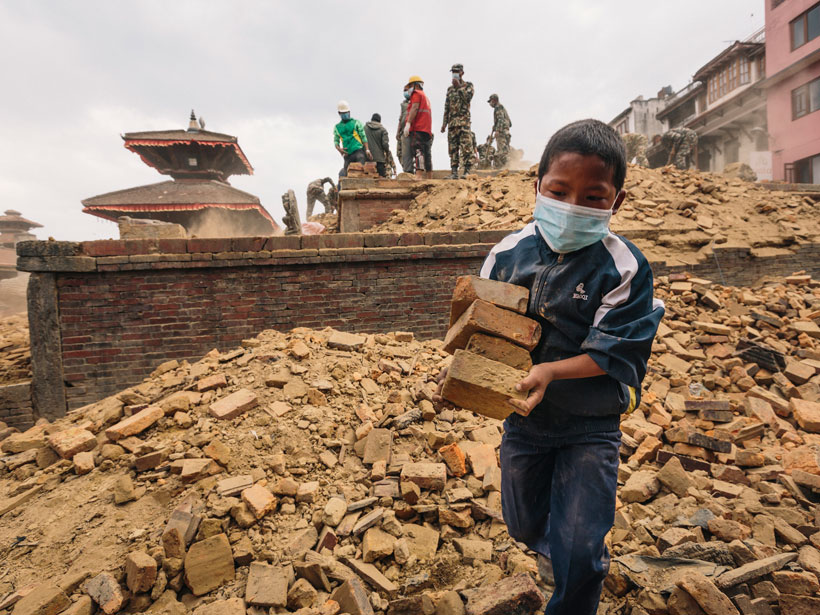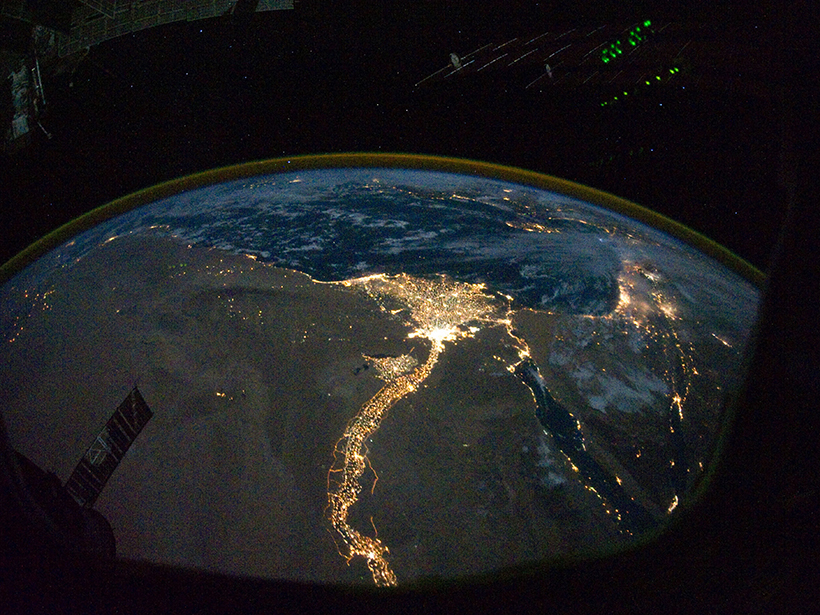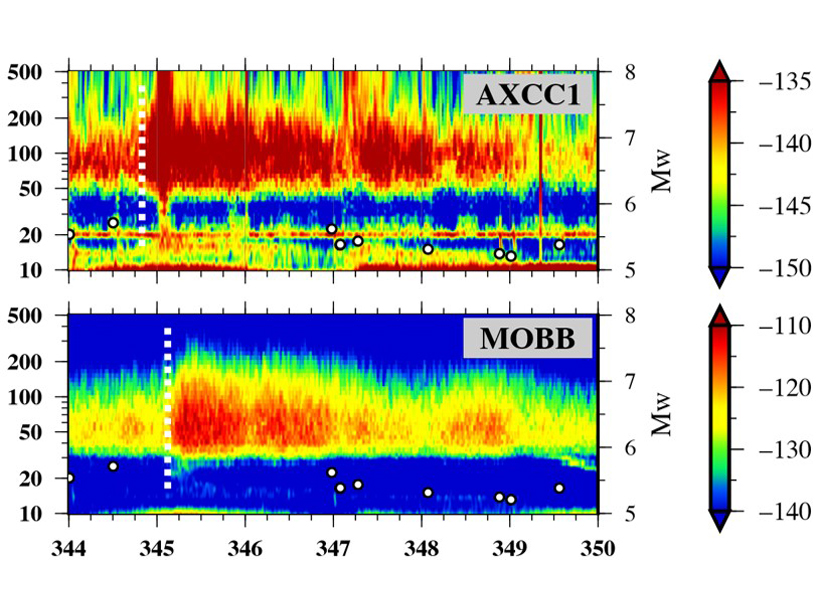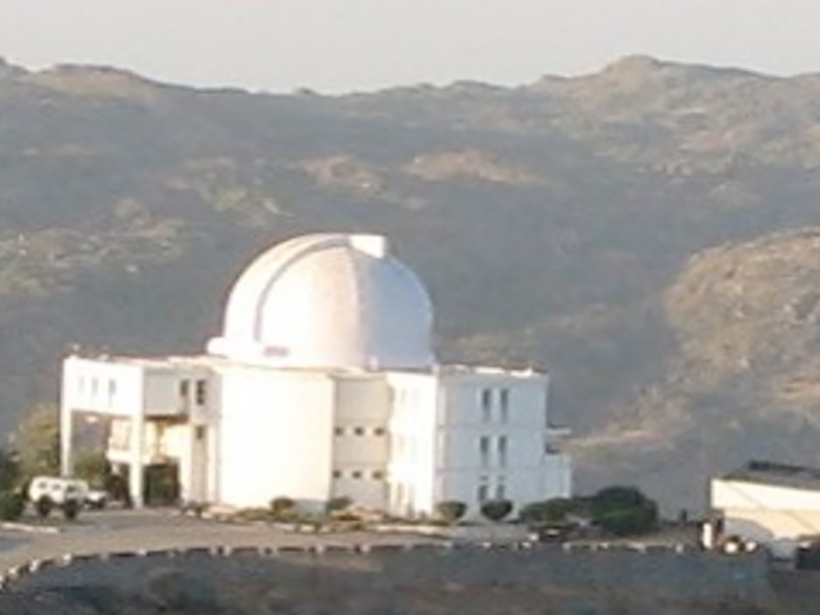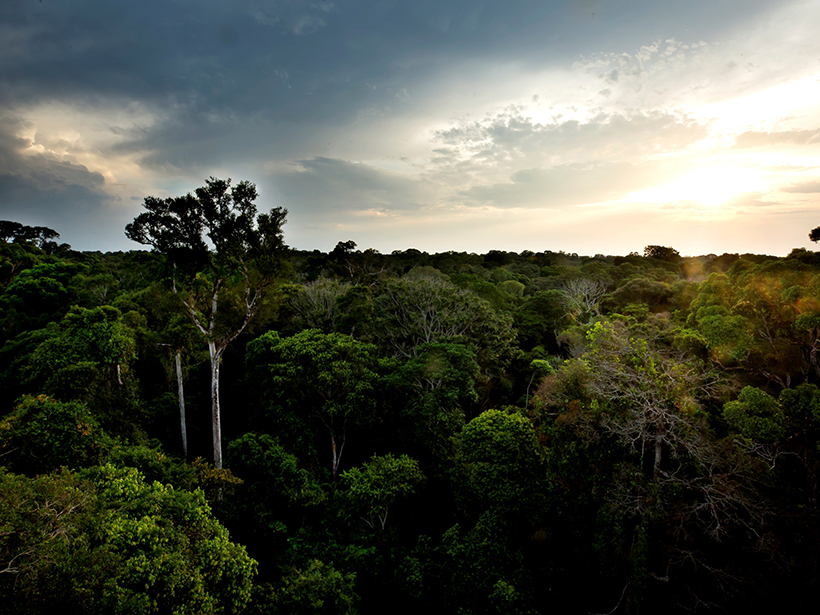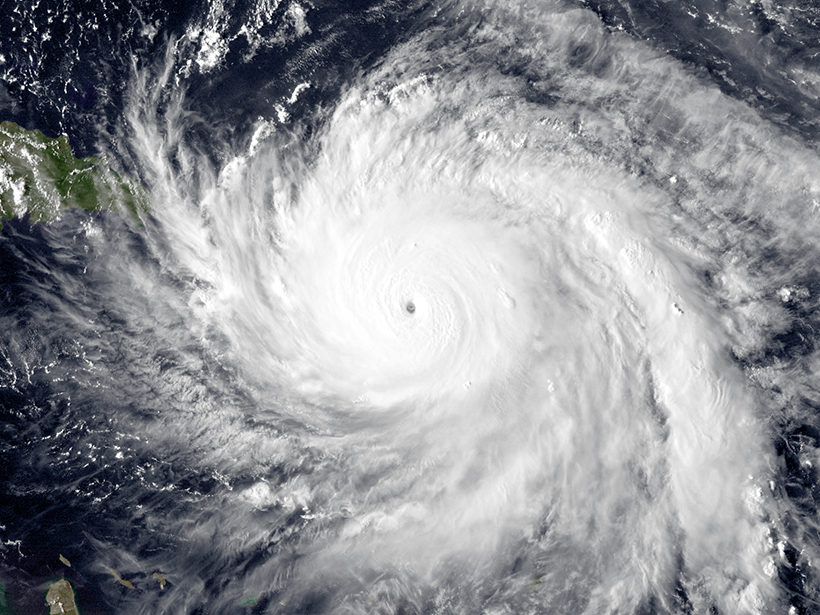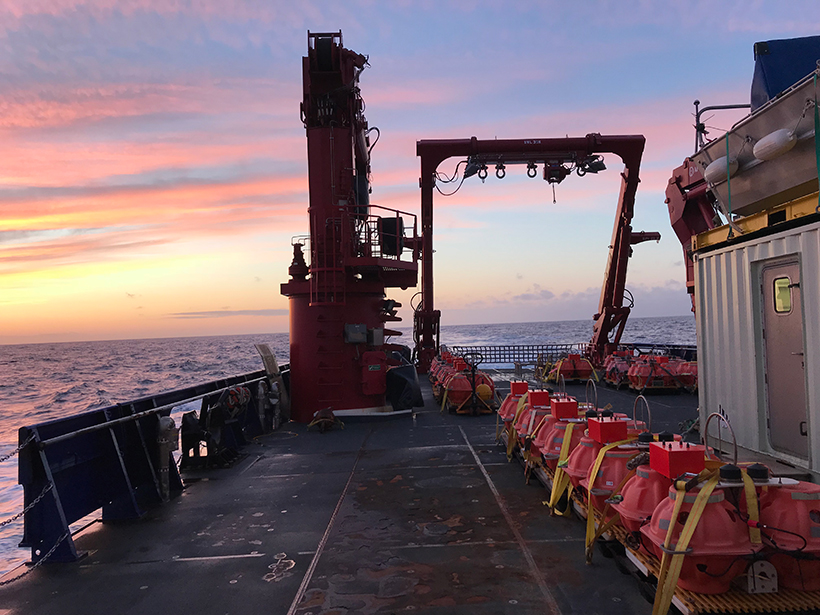The results of a novel analysis of aftershock size distribution have important implications for more realistically assessing the seismic hazard of earthquake sequences.
CC BY-NC-ND 2019
Modeling Digs Beyond Soil Properties and Processes
International Soil Modeling Consortium Conference: New Perspectives on Soil Models; Wageningen, Netherlands, 5–7 November 2018
The Renaissance of Hydrology
Hydrology has evolved as a transdisciplinary, data-driven science in a remarkably short period of time.
Fireball over the Bering Sea
Powerful meteorite explodes over “a sensitive part of the world.”
Follow The ‘Hum’: The Seismic Signal of Pacific Ocean Storms
Have you ever noticed that the Earth is humming? Seismologists have! Discover how individual storms in the northern Pacific Ocean generate a long-period seismic signal.
What Drives Temperature Inversions in the Mesosphere?
A study of nightglow over India reveals that gravity waves are less important than previously thought.
A Simplified Model of Water Vapor Exchange in the Amazon
Evapotranspiration is the exchange of water vapor between land and the atmosphere, and it is hard to measure and model. A new study shows promise for its estimation over large, vegetated landscapes.
A Better Understanding of Tropical Cyclones
A new model of how anvil clouds form could improve short-term hurricane forecasts.
Examining Alaska’s Earthquakes on Land and Sea
The Alaska Amphibious Community Seismic Experiment is taking a close look at seismic activity along the Alaska Peninsula to understand earthquakes in this little-studied region.
Ancient River Discovery Confirms Mediterranean Nearly Dried Up in the Miocene
Sedimentary deposits reveal a Nile-sized river system flowing from what are today Turkey and Syria.

